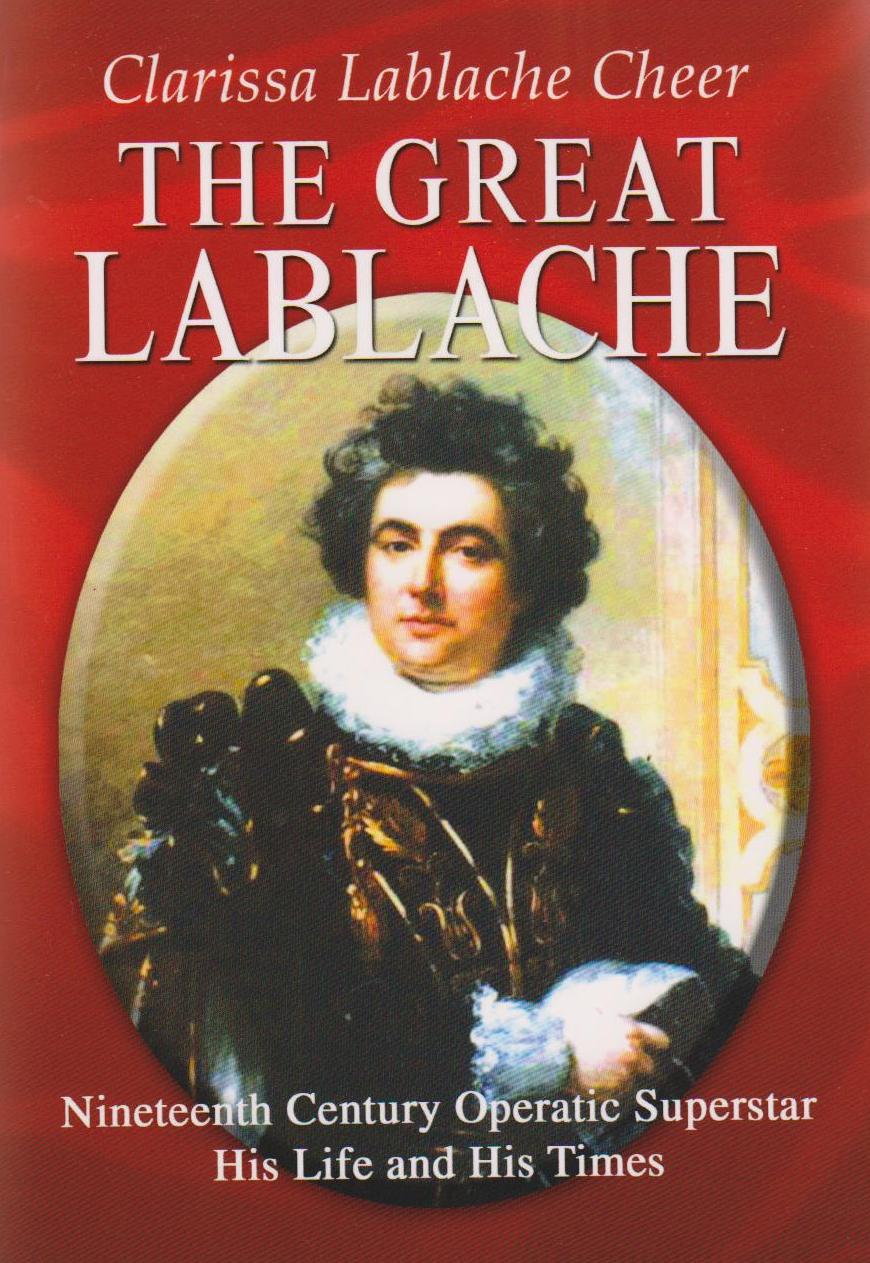
The Great Lablache
By Clarissa Lablache Cheer (www.Xlibris.com)

I’ve always admired people who are able to write a book on historical singers who didn’t record one single note, either because nobody ever asked them or they had already died by the time records could be produced. Of all those lost voices for ever the bass Luigi Lablache is one of the few still known names. He was a member of the most famous quartet that ever ruled Italian opera (the others being Pasta later Grisi, Rubini later Mario, Tamburini) in Paris and London and thus the world as more poor Italy couldn’t pay their fees. Still not everything is lost of Lablache. In those days composers specifically composed for the singers at their disposal and the singers often considered themselves to be co-creators. Thus Lablache lives on in the scores of many a composer, Donizetti being the foremost among them. These last thirty years Opera Rara, Bongiovanni and some other labels have offered us recordings which once only were names and sometimes made reading about the 19th century both stimulating and boring at the same time. Among the operas Lablache created Elvida, L’Esula di Roma, Il Paria, Il Gioveda Grasso, Il Pazzi per Progetto, Il Diluvio Universale, Sancia di Castiglia, Marino Faliero are available. Lablache also created Verdi’s I Masnadieri, Mercadante’s Elisa e Claudio, Pacini’s L’ Ultimo Giorni di Pompei and a lot of other pieces which nowadays ring a bell and makes reading less tedious than it used to be. But Lablache will always be associated with the world première of that one opera which is still firmly footed into the iron repertoire; Don Pasquale. That score tells us a lot on Lablache: not a basso profundo but what the French call “une basse chantante”, brilliantly versed in florid singing and more of a bass-baritone than a real bass.
The author , now living in the United States, clearly knows what aficionados require. Though the book is privately published, due to computer technology we get not only footnotes but a useful index as well (easy to do, I know, and still lacking in some commercial issues). Moreover the author gives us a fine chronology and a list of Lablache’s creations and first performances. This big book (701 pages) has more than 150 pages of illustrations, some well-known, some interesting ones and a few superfluous one (does one really need a black and white photo of the playbill of the movie Scaramouche, starring the most famous of Lablache’s direct descendants: second cousin of the author James Stewart, better known as the actor Stewart Granger ? )Though the book tells us Lablache’s career in great detail, it throws the nets wide and far and the base line of the book ‘Lablache His Life and his Times’ is more correct. Indeed, one often wonders if one needs that many long winded quotes on the singer and his contemporaries. When the reviewer is a musician like Berlioz, there are some interesting glimpses but often the same generic words on the big booming voice and the impressive physique of the singer appear again and again. And pages long quotes on Paganini, Rubini etc. do not make for easy reading. Therefore the book is somewhat meant for those readers who want to know everything on the 19th century belcanto praxis. For a big book there are remarkably few mistakes in it: e.g. Donizetti’s (instead of Rossini’s) Mathilde di Shabran (p.246).
Jan Neckers